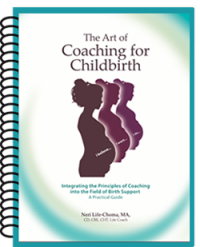I wish I would never have to write this blog post, but I am afraid it is the only way for me to heal my own trauma. I witnessed abuse in the L&D room. I felt helpless. I felt I had to remain silent in order to stay in the room. This experience made me think of all my doula sisters who are witnessing abusive experiences all over the world. They must remain silent in order to stay in the room. I want to be the gatekeeper in L&D. I am like the news reporters who report crimes against humanity and wake the world up to take action.
Can birth support become a traumatic experience for doulas?
Verbal abuse in L&D: threatening, scolding, ridiculing, shaming, coercing, manipulating, mocking, dismissing…
The terms Vicarious traumatization (VT), Secondary Traumatic Stress (STS) and Compassion Fatigue, are professional terms describing the trauma of caregivers. The trauma results from empathetic engagement with traumatized clients and their reports of traumatic experiences. Even this term cannot describe the trauma of the doula who witnessed her birth client being abused. I did not hear the traumatic birth story, I was present when it happened.
I want to stress the fact that this childbirth could have been considered a beautiful, healthy and positive birth process if it weren’t for the abusive behavior of the doctor. In order to convince you of that, I ask that you read the birth story below twice- on the first reading, read only the black text; on the second, read the parts that are in green italic letters as well. The birth story is at the bottom of this post.
I am not the first one to report abusive behavior in L&D. As part of my healing process, I searched for articles about abusive expressions in L&D and found them in the two languages that I speak and read: English and Hebrew. A few months ago, an article came out in one of the most prestigious Israeli newspapers describing the horror and abuse of Israeli birth givers experience in L&D.
We (doulas, patients, L&D nurses) tend to feel helpless, so we rationalize and accept these behaviors while denying our experience of them.
The topic has been researched and studied
I discovered this article: Abuse in Hospital-Based Birth Settings, by Susan Hodges, MS, to be very helpful in achieving my goal – defining the trauma of the doula who witnesses abuse. Hodges describes the expressions of labor and delivery abuse as well as the dilemma of the abused patient: “Verbal abuse includes behaviors such as threatening, scolding, ridiculing, shaming, coercing, yelling, belittling, lying, manipulating, mocking, dismissing, and refusing to acknowledge—behaviors that undermine the recipient’s self-esteem while enhancing the abuser’s sense of power, typical of bullying. Most of us would recognize these as abusive behaviors in just about any other setting. However, because we are socialized to both expect trustworthy and professional behavior in the hospital setting and to be “compliant” with medical directives, these behaviors are seldom recognized and interpreted as abuse. Furthermore, staff and doctors are the authorities in the hospital, while the pregnant and laboring woman is merely a “patient.” Such a huge power imbalance allows, even encourages, bullying and abuse. We tend to feel helpless, so we rationalize and accept these behaviors while denying our experience of them. “
By using the word ‘we’ in the last sentence Hodges implies that patients and doulas, or other witnesses, are in the same position – feeling helpless and rationalizing this behavior as ‘poor bedside manners’ – which we tend to be more forgiving towards, as a society. How many times did you hear the sentence, “He has poor bedside manners, but he is a great doctor”.
I believe that that the doula position is different in regard to an abusive environment in two aspects:
- Doulas know better than their clients on what to expect: While the doula and the expectant couple can both equally recognize rude behaviors such as “ridiculing, shaming, coercing, yelling, belittling, mocking, dismissing…,” the doula is more knowledgeable and experienced in the field of birth support and is far more equipped to recognize threatening, manipulation, and lying. Identifying these in Labor and Delivery will require basic knowledge of the field terminology, ‘evidence-based care’, and a basic understanding of causality in childbirth. This means that the doula can detect and identify abusive behavior that her clients may perceive as an act of care. Hodges points out the need to educate birth givers in order to reach an informed consent: “Women who are well-informed and ready to ask questions about procedures, treatments, and interventions during labor can address some deficiencies of “informed consent” and not be hoodwinked into unnecessary interventions.“ However, this kind of education breaks the rapport and trust between birth givers and representatives of the medical system. This situation is described by Christine Morton as the doulas’ advocacy dilemma in her book ‘Birth Ambassadors’, and there is a general agreement among doula certifying organizations doulas should avoid initiating a tug-of-war in L&D. Additionally, this type of education seems to work prenatally, but is flying out the window when birthing individuals are overwhelmed with fear.
A doula who speaks-up is taking the risk of becoming an unacceptable or unwelcomed at this facility in the future
- Doulas lack the ability to file a complaint or take any affirmative action: Several organizations, such as CIMS, LAMAZE, and Citizens for Midwifery, encourage birth givers, who suffered abuse in L&D, to file a complaint following the birth. According to Hodges, this action is not only with the purpose of reducing the expressions of abuse in L&D, but instead is perceived as an act of empowerment. “Filing complaints alone will not solve the problem. However, women, I’ve spoken with who did so felt empowered, and it helped them acknowledge to themselves that they had been mistreated and were not at fault.” Well, here lies a big difference between the patient and the doula. Doulas remain silent. A doula who shares her negative experience with a caregiver or with hospital staff is taking the risk of becoming an unwelcomed persona in this facility. We are lucky to have our doula support circles, and we can always cry on our peers’ shoulders and get their support, but this is equivalent to the birth giver sharing her trauma with a friend, and this might not be enough for true healing and empowerment.
Please read the story twice
Now that I’ve shared some general insight about abusive behavior in L&D, here is the birth story that I promised to share with you. For your own benefit, please read twice as previously requested.
My client, Beverly, woke up at 4 am in a puddle. Her first labor began with a rupture, and her contractions began shortly after. By 7 am her contractions were around 50 seconds long and about 5 minutes apart. At 10 am, her contractions intensified and occurred every 3 minutes for about 1 minute at a time. At that point, Bev noticed that she was bleeding and decided to meet me at the hospital. Upon arrival at the hospital, she was vaginally checked and measured to be 4-5 cm dilated and 90% effaced, and after a 30 minute EFM, we went to the shower. Bev was breathing beautifully and handling her birth with grace and confidence. Her OB was out of town, and the on-call OB from his group showed up and went into the shower to listen to her lungs. After the OB visit, Bev’s partner came out of the shower and shared that the doctor was commenting on the couple’s request to delay the cord clamping, by saying that he can wait only 90 seconds, as too long of a wait can lead to disasters. He shared an article he has just read about the baby’s leg amputation due to a cord clamping delay. I went back to support Bev in the shower, and she shared her disappointment that her OB was not the one to see her through her birth. After a long hour in the shower, Bev felt some pressure towards her anus and was asked to come out and be checked. She was 6-7 cm, 100% effaced, baby in a station (-2). It felt for her like the right time to get the epidural that she has planned on taking. At 4pm, the nurse started the drip of fluids. Coping with the contractions in the room Bev was convinced that taking an epidural is the right thing for her. She asked for a low dose epidural, but the anesthesiologist has said that preference is, to begin with, a good dose and then slowly lower it. Following the administration of epidural, Beverly’s contractions have totally stopped, her blood pressure went deeply low, and the fetal monitor showed a 4-minute deceleration, which was controlled and recovered with a change of position and oxygen. She had no sensation nor the ability to control her legs. While the nurse and the anesthesiologist were mainly occupied with recovering the low blood pressure and the baby’s FHR, I was concerned with the lack of contractions. I thought it will be wise to prepare my clients for the possibility of administrating Pitocin, reminding them that it is one of the possible side effects of epidural. After 3 hours wait, with no sign of contractions, The OB came into the room and began explaining to the couple that as for now, a process of deterioration of the baby’s brain has already begun. The OB further explained that if they do not manage the birth and bring it to an end than this deterioration can become brain damage. (I am sharing the nuggets of it, as he rambled on and on for a good 10 minutes, sharing ‘studies’ and medical schools ‘All in favor of the couple making an informed decision’. ) When the couple asked for a few minutes to think about all that they have heard, the OB looked me in the eyes and said: ”Just for you to know, under the law of California, any medical advice is considered practicing medicine and you will be in big trouble”. The couple decided to follow the OB’s suggestion, who has inserted the IUPC and began Pitocin. Following the administration of Pitocin. Bev’s contractions have recovered; by 8 pm she was fully dilated, with the baby still in (-2). A dose of antibiotics was given to the birth giver due to maternal fever and the long rapture. By 10 pm, with the baby in (-1), she began to push. When the baby came down to (+1) Bev was able to feel the pressure building, and she pushed strongly, making progress with each contraction. The nurses changed shifts and we had a new, refreshed and very supportive nurse in the room. As the baby descended, there were a few more declarations that recovered after the contractions were over. The nurse kept encouraging and complimenting Bev for her effective pushing, and then the OB came again to the room and began talking to the partner. In his words, he said, “I know you do not like it when I bring things ahead of time, but I think it is important for you to make an informed decision, therefore I want to talk to you about choosing between forceps and vacuum”. Then he stopped because Bev felt the urge being built and we all attended to her as she pushed, the husband is next to her head and counting, the nurse at her perineum and I stood by her side supporting her leg. The contraction is over and the OB continues talking: ” I personally prefer the forceps, but it is a matter of medical schools, as most doctors these days will use the vacuum…..” and he stops again as Bev is asking for our attention and is pushing like a lioness, I swear. As he went out of the room, leaving the partner to make his decision, the partner asked me what was going on. He felt like one of us is lying to him, not telling the truth. How can it be that the nurse and the doula are being all excited about the progress, and the OB is asking him to choose between the vacuum and the forceps? The nurse and I tried to reassure him that there will be no need for him to choose. He was so terrorized and said:” I know the vacuum to be safer for the baby, but I’m afraid to choose against his preference, he might get really angry and decide to end it now with a cesarean”. In order to lead him back to his logical thinking, I began asking questions: ”What do you know about vacuum and forceps”? And then asking the nurse: “Percentage-wise, what would you say is used more here in the hospital?” The nurse was reassuring the dad that he needs to choose based on what he feels more comfortable with. This coaching conversation took place between moms pushes. I went ahead asking the nurse: “Is there a medical reason that you are familiar with to end this birth with a cesarean now?”, and we both reassured the dad again and again, while all along the mother kept pushing, and — here comes the head! The OB was called to the room and began dressing. While it was clear that in the next contraction the head was going to show up, he said “Well, because you were waiting so long since the water broke, and as I explained the deterioration has begun hours ago, and there is already maternal fever, your baby will go to the NICU and will stay there for two days for special care”. The NICU team arrived and a few minutes later we heard the baby crying his lungs out. The neonate doctor said: ”Why was I called? This baby boy is so strong, here mama” and she puts the baby on the mother’s chest. Bev’s healthy and strong baby boy was born at 12:30 am, and he nursed right away. The couple had two beautiful hours of bonding with the baby.






